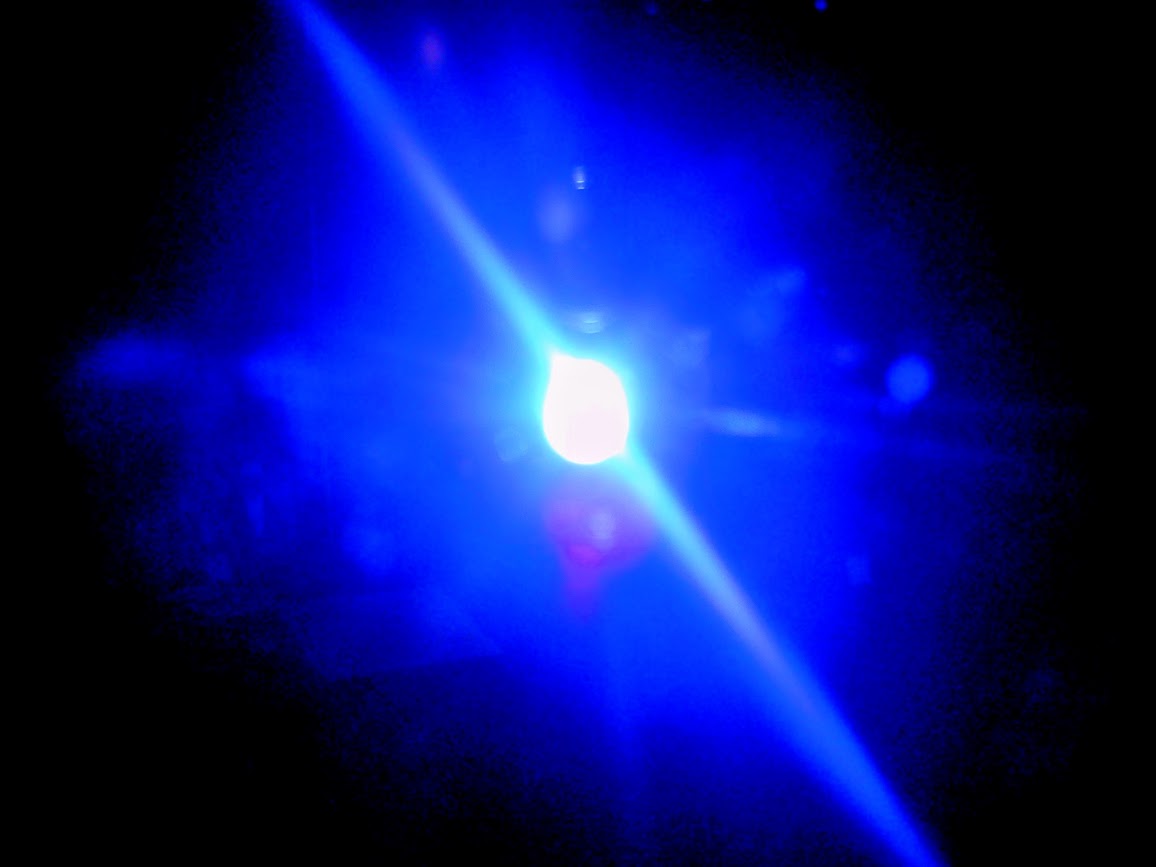Science
Scientists Unveil Chip That Transforms Laser Light into Data Streams

Researchers at the Columbia University School of Engineering and Applied Science have developed a groundbreaking chip that converts a single laser into a “frequency comb,” generating multiple light channels simultaneously. This innovation could revolutionize data center efficiency and advance technologies in sensing, quantum systems, and LiDAR applications.
While working on enhancing LiDAR, which employs lightwaves to determine distances, the scientists aimed to create high-power chips capable of producing brighter beams. As they increased the power output, they observed the emergence of a frequency comb. This unique arrangement of light, featuring numerous colors aligned in a structured pattern akin to a rainbow, allows for the transmission of multiple data streams without interference. Each color acts as an independent channel, maximizing data throughput.
Data centers have a growing demand for efficient light sources that can operate across various wavelengths. Traditionally, generating a powerful frequency comb necessitated large, costly lasers and amplifiers. The recent discovery demonstrates that this capability can now fit onto a single chip, which has significant implications for cost and space efficiency in technology infrastructure.
To create this innovative light source, the researchers utilized a multimode laser diode similar to those found in medical devices and laser cutting tools. Although these lasers produce substantial light output, their “messy” beams complicate precise applications. By integrating the laser into a silicon photonics chip with pathways only a few microns wide, the scientists employed a locking mechanism to refine the light source.
This engineering method enhanced the laser’s output, resulting in a cleaner and more stable beam—a property known as high coherence. Once purified, the chip’s nonlinear optical characteristics split the powerful beam into evenly spaced colors, a hallmark of frequency combs. As a result, this compact light source marries the high power of industrial lasers with the precision required for advanced communication and sensing technologies.
The implications of this development are substantial. The new chip allows for the replacement of numerous individual lasers with a single compact device, potentially reducing costs and conserving space in data centers. Furthermore, the ability to generate multiple high-power beams on a chip could lead to faster and more energy-efficient systems.
This technology mirrors the principles of wavelength-division multiplexing (WDM), which transformed the Internet into a global high-speed network in the late 1990s. The potential to integrate this capability into compact and cost-sensitive computing components marks a significant advancement in modern technology.
Beyond data centers, these chips could find applications in portable spectrometers, ultra-precise optical clocks, compact quantum devices, and advanced LiDAR systems, significantly impacting various fields.
The findings are detailed in the journal Nature Photonics, under the title “High-power electrically pumped microcombs.” This research not only paves the way for next-generation technologies but also highlights the innovative spirit of scientific inquiry at Columbia University.
-

 Education3 months ago
Education3 months agoBrandon University’s Failed $5 Million Project Sparks Oversight Review
-

 Science4 months ago
Science4 months agoMicrosoft Confirms U.S. Law Overrules Canadian Data Sovereignty
-

 Lifestyle3 months ago
Lifestyle3 months agoWinnipeg Celebrates Culinary Creativity During Le Burger Week 2025
-

 Health4 months ago
Health4 months agoMontreal’s Groupe Marcelle Leads Canadian Cosmetic Industry Growth
-

 Science4 months ago
Science4 months agoTech Innovator Amandipp Singh Transforms Hiring for Disabled
-

 Technology3 months ago
Technology3 months agoDragon Ball: Sparking! Zero Launching on Switch and Switch 2 This November
-

 Education3 months ago
Education3 months agoRed River College Launches New Programs to Address Industry Needs
-

 Technology4 months ago
Technology4 months agoGoogle Pixel 10 Pro Fold Specs Unveiled Ahead of Launch
-

 Business3 months ago
Business3 months agoRocket Lab Reports Strong Q2 2025 Revenue Growth and Future Plans
-

 Technology2 months ago
Technology2 months agoDiscord Faces Serious Security Breach Affecting Millions
-

 Education3 months ago
Education3 months agoAlberta Teachers’ Strike: Potential Impacts on Students and Families
-

 Science3 months ago
Science3 months agoChina’s Wukong Spacesuit Sets New Standard for AI in Space
-

 Education3 months ago
Education3 months agoNew SĆIȺNEW̱ SṮEȽIṮḴEȽ Elementary Opens in Langford for 2025/2026 Year
-

 Business4 months ago
Business4 months agoNew Estimates Reveal ChatGPT-5 Energy Use Could Soar
-

 Technology4 months ago
Technology4 months agoWorld of Warcraft Players Buzz Over 19-Quest Bee Challenge
-

 Business3 months ago
Business3 months agoDawson City Residents Rally Around Buy Canadian Movement
-

 Technology2 months ago
Technology2 months agoHuawei MatePad 12X Redefines Tablet Experience for Professionals
-

 Business3 months ago
Business3 months agoBNA Brewing to Open New Bowling Alley in Downtown Penticton
-

 Technology4 months ago
Technology4 months agoFuture Entertainment Launches DDoD with Gameplay Trailer Showcase
-

 Technology4 months ago
Technology4 months agoGlobal Launch of Ragnarok M: Classic Set for September 3, 2025
-

 Technology4 months ago
Technology4 months agoInnovative 140W GaN Travel Adapter Combines Power and Convenience
-

 Science4 months ago
Science4 months agoXi Labs Innovates with New AI Operating System Set for 2025 Launch
-

 Technology4 months ago
Technology4 months agoNew IDR01 Smart Ring Offers Advanced Sports Tracking for $169
-

 Top Stories2 months ago
Top Stories2 months agoBlue Jays Shift José Berríos to Bullpen Ahead of Playoffs










